The annual
Pinot Days wine tasting event in Los Angeles was actually the second such event for 2012. After the January event, the date was bumped up to its new home in November. The event was held November 11, 2012 at the Shrine Auditorium hall.
Steve and
Lisa Rigisich stage this event, and they do a great job of pulling together Pinot Noir producers from California, Oregon and New Zealand - as well as a few from other locales.
All the wines mentioned here are Pinot Noir, unless otherwise noted. Here are some of the highlights I found - in an event where nearly everything was worthy of note:
Belle Glos Wines, Rutherford, CA
2011 Clark and Telephone - Santa Maria Valley fruit with rich chocolate on the nose and palate; great for the holidays
2005 Las Alturas - smokey raspberry and tea, from the Santa Lucia Highlands
Bien Nacido Vineyards, Santa Maria, CA
Winemaker
Trey Fletcher told me they only make about a thousand cases per year, since their fruit is in such high demand. They sell around 300 acres of grapes to other vintners. Fletcher said, "It's a pleasure to work with Pinot Noir and Chardonnay fruit from 40-year-old vines.”
2009 Solomon Hills Vineyard - coffee, tea and minerals
2009 Bien Nacido Vineyard - beautiful earthiness
Cameron Hughes Wine, San Francisco, CA
According to their website, Cameron Hughes is “an American négociant that makes, imports and distributes” wines that often sell for under $20 per bottle, nearly always under $30. Wines from Cameron Hughes always make me feel like I got a lot for my money. These are great values.
2009 Russian River Valley - mocha and earth
2009 Santa Maria Valley - cola and earth
2009 Savigny les Beaune - tart and fresh, from a French vineyard
2010 Casablanca Valley - from Chile, cool climate, huge nose, big tea notes
2010 Sonoma County - touch of orange peel
2009 Los Caneros - dark nose, black tea, great acidity.
Fess Parker Winery and Vineyard, Los Olivos, CA
2009 Ashley's Vineyard - big minerals and acidity
La Fenêtre, Santa Maria, CA
Winemaker
Joshua Klapper (right) keeps coming forth with terroir-driven Pinots reflective of the choice locations sourced.
2009 A Cote North Coast - black tea, acidity
2010 Santa Maria Valley - dark yet delicate
2010 Le Bon Climat Vineyard - Santa Maria Valley; delightfully funky; good with game
2010 Bien Nacido Vineyard - earth, minerals
2010 Presqu’ile Vineyard - minerals, tea, acidity
Olson Ogden Wines, Santa Rosa, CA
2009 Alder Springs Vineyard - from Mendocino, seven miles from the Pacific; mocha, cola, acidity; feels like the holidays
Pence Ranch, Buellton, CA
Winemaker
Jeff Fink did a great job on these, and got quite a bit of chatter at the event.
2010 Estate Sta Rita Hills - big black tea
2010 Uplands - dark and delicious
2010 Westslope - huge minerals
Sanford, Lompoc, CA
2010 Sta Rita Hills - blend of their two estate vineyards; chocolate, mocha, tea; ready for the holidays
2009 La Rinconada - smokey minerals
2009 Sanford and Benedict - dark, smokey fruit
These entries showed admirably, too:
Alma Rosa Winery and Vineyards, Buellton, CA
2008 Sta Rita Hills - raspberry candy on the nose, tea and cranberry on the palate; six different Pinot Noir clones are blended
2010 Sta Rita Hills - two clones; young and fruity
Alta Maria Vineyards, Santa Maria, CA
2009 Santa Maria Valley - several vineyards combine for this darkly perfumed wine
2010 Santa Maria Valley - huge notes of black tea
Ancient Oaks Cellars, Santa Rosa, CA
2010 Russian River Valley - smoke, tea and coffee
2009 Estate - dark cranberry flavors
August West, San Francisco, CA
Winemaker
Ed Kurtzman is a Deadhead, and the name August West is a character in the Grateful Dead song, “Wharf Rat.” Digging a little deeper, the lyrics of the song have August West stating that he loves his Pearly Baker more than he loves his wine. The Reverend Purley Baker was a prohibition-era anti-alcohol fanatic. Today, a group of sober Deadheads call themselves Wharf Rats. Their motto is "One show at a time.” It’s a shame they can’t enjoy these:
2011 Russian River Valley - candy edge to black tea flavor
2011 Rosella's Vineyard - dark cranberry notes
Benziger Family Wines, Glen Ellen, CA
2010 Signaterra Bella Luna Vineyard - Russian River Valley fruit is biodynamically farmed,,has a barnyard edge
2010 De Cuelo - also very funky, earthy
Blair Vineyards, Salinas, CA
2010 Estate - eastern part of the Arroyo Seco AVA; their first vintage; fresh, clean tasting wine, just a hint of smoke
Cargasacchi Wines, Lompoc, CA
One taster cried, "The Lompoc wine barn!" as he approached the Cargasacchi table, as if he thought he’d never arrive.
2009 Point Conception Salsipuedes - coffee, black tea, fruit, acidity; pretty good for a budget wine
2010 Cargasacchi Jalama Vineyard - great fruit forward presentation
Cornerstone Cellars, Oregon
I usually see
Cornerstone’s
Craig Camp (left) singing the praises of his Napa Valley fruit, but this time he was touting the Oregon branch office, which produces some very good Willamette Valley Pinot Noir. He chatted about good grapes, cool climate and tough vintages.
2010 Stepping Stone - tea, acidity
2010 Cornerstone Oregon - nice acidity and tartness from a difficult vintage; classic, floral, delicate
Derby Wine Estates, Paso Robles, CA
2007 San Simeon Reserve - like port on the nose, dark and intense flavors
Domaine Serene, Oregon
2009 Winery Hill - cherry cola
2008 Evenstad Reserve - blend of seven vineyards; earthy, black tea, great acidity
Fess Parker Winery and Vineyard, Los Olivos, CA
2010 Sta Rita Hills - due in Feb. fruit comes first
2010 Sta Rita Hills Clone 115 - acidity
2010 Sta Rita Hills Pommard Clone - dark, coffee and tea
Fort Ross Vineyard and Winery, San Francisco, CA
Fort Ross-Seaview is a new appellation, along the western edge of the Sonoma AVA.
2007 Fort Ross Vineyard - minerals
2009 Fort Ross Vineyard - coffee and tea
Inception Wines, Los Angeles, CA
This SoCal vintner sources grapes from Santa Barbara County.
2010 Central Coast - fruit from Edna Valley, Santa Maria Valley, Los Alamos; nice black tea notes
2010 Santa Babara County - rich dark fruit
2009 Sta Rita Hills La Encantada - beautiful black tea and acidity
Kendric Vineyards, San Anselmo, CA
2008 Marin County - very floral, holiday spice
2009 Marin County - more minerals
MacRostie Winery, Sonoma, CA
2008 Sonoma Coast - abundant minerals
2008 Wildcat Mountain - big tea notes, acidity
Both are very BIG wines
Pali Wine Company, Lompoc, CA
2010 Bluffs - Russian River Valley fruit; BIG fruity nose, huge floral and tea aspect on palate; These guys make enormous wines.
Stoller Vineyards, Dundee Hills, OR
2009 Reserve - very fruity
Thomas Fogarty Winery, Portola Valley, CA
2010 Santa Cruz Mountains - cranberry, earth
2010 Rapley Trail Vineyard - fruity tea
2010 Windy Hill Vineyard - minerals, earth, pomegranate
Thomas George Estates, Healdsburg, CA
2011 Rosé of Pinot Noir - refreshing, dry, mineral laden
2010 Russian River Valley - minerals black tea
2009 Star Ridge - dark and fruity
Witch Creek Winery, Carlsbad, CA
2009 Clarksburg - funky candy
It was Nice bumping into
Jeff Zimmitti of
Rosso Wine Shop in Glendale. Jeff told me he has been appearing quite a bit on
The Tasting Room with
Tom Leykis. Apparently Leykis has broadened his spectrum from cult cabs to European wine of late, particularly Italian varieties, which has to make Zimmitti happy.
It was a big surprise to see
Heidi Hamilton, my one-time radio buddy, there. She is now appearing in the morning show on KLOS/Los Angeles. She was pouring at the station’s bubbly booth, helping cleanse palates when not darting over to one side of the room or the other for a taste of Pinot. Hamilton thought I was kidding when I told her I spit out my tastes. “I’d drink over a gallon of wine if I didn’t,” I explained. “What am I, in college?”
Rob Barnett of
Vin Village was situated perfectly to catch people as they entered the hall. We chatted briefly about wines from Clarksburg and Baja, until he was overrun by fans.
Josh Klapper of
La Fenêtre kept up his usual fast-paced patter while throwing an aside to me without breaking stride. “That’s off the record, Randy,” he shot my way. I wish I’d been paying attention to what he was saying at the time. I was distracted by his wines.
Follow Randy Fuller on Twitter













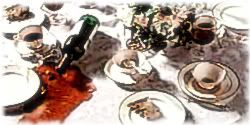 The
Rock And Roll Hall of Fame will induct new members on April 14, 2012 in
Cleveland, Ohio. It's the 27th annual induction ceremony, the 27th
time rock fans get to yell "It's about time!" or "Where's KISS?" With
all that shouting, we're going to need something to soothe our nerves.
The
Rock And Roll Hall of Fame will induct new members on April 14, 2012 in
Cleveland, Ohio. It's the 27th annual induction ceremony, the 27th
time rock fans get to yell "It's about time!" or "Where's KISS?" With
all that shouting, we're going to need something to soothe our nerves.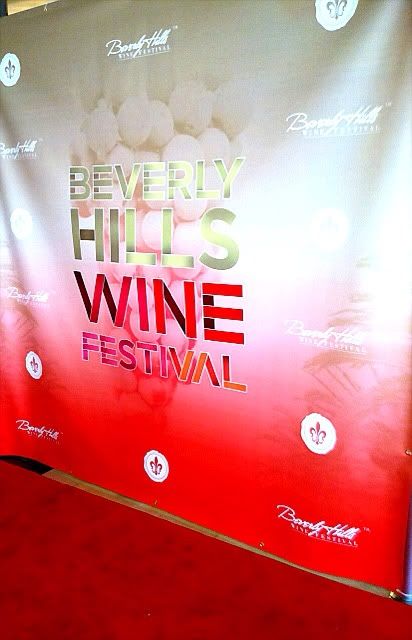
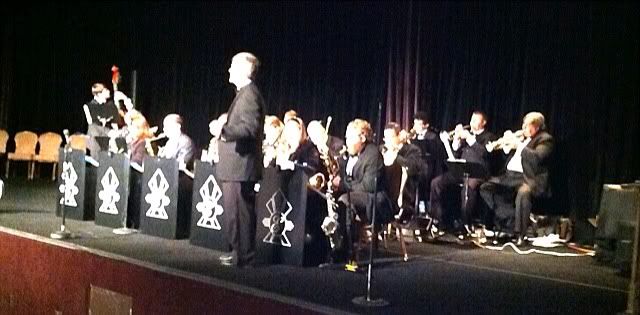 On the down side, a funky numbering system and a lack of identifying signage made it a bit difficult to find specific wineries one might be looking for, but most people seemed to enjoy just making their way from table to table, sampling whatever came their way.
On the down side, a funky numbering system and a lack of identifying signage made it a bit difficult to find specific wineries one might be looking for, but most people seemed to enjoy just making their way from table to table, sampling whatever came their way.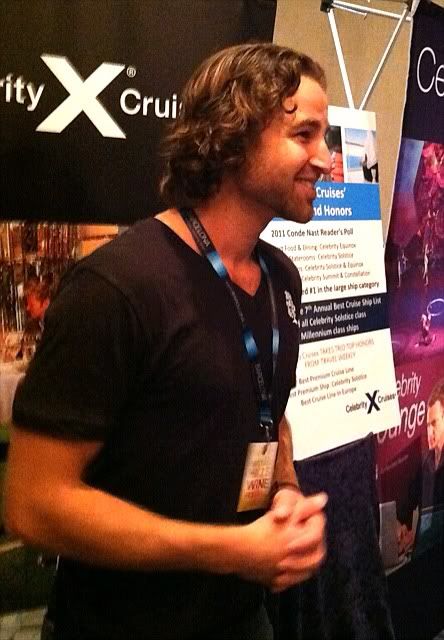 My first taste of Malibu's
My first taste of Malibu's  The
The 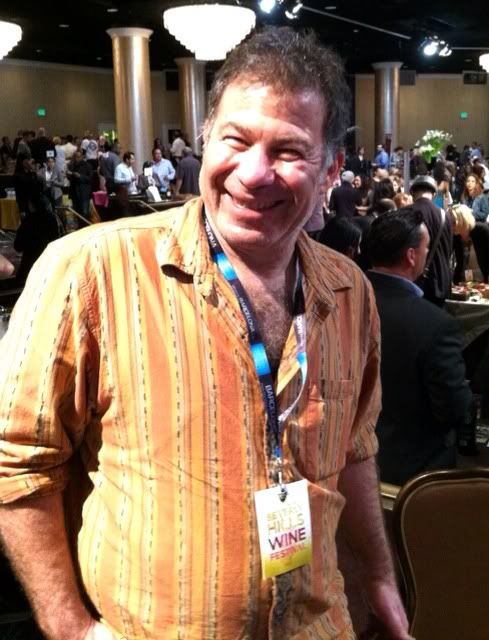 Mike Stan (left) of
Mike Stan (left) of  Naked Grape
Naked Grape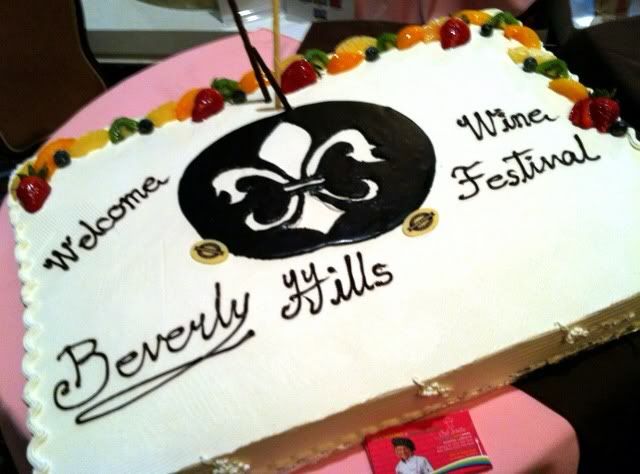 Although the wine was the focal point of this event, there were some very tasty treats on display. Sweets from the
Although the wine was the focal point of this event, there were some very tasty treats on display. Sweets from the